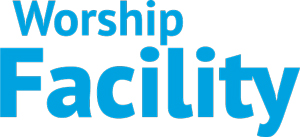Over the last several years, there’s been a noticeable shift in the role of acoustic guitars in modern worship music. In many churches, the acoustic guitar has been sidelined or even muted entirely in the mix. This trend has even become the subject of jokes among some church audio engineers and organizations. Videos circulate where engineers reveal their “secret” to mixing acoustic guitar by simply muting the channel—case closed. While this may get a laugh, it reflects a troubling attitude towards a valuable instrument and the musicians who play it.
Why the Acoustic Guitar Matters
I’ve often said that one of the most liberating and effective mixing techniques is the realization that you don’t have to hear every instrument all the time. But, let’s get one thing straight: muting the acoustic guitar is lazy. It disrespects the musician who has invested time and effort into their craft, and it dismisses the unique contributions the acoustic guitar can bring to worship. Yes, modern worship music often leans heavily on electric guitars, and that’s fine.
But the acoustic offers something different. When played well and mixed properly, it adds a rhythmic lightness and shimmer that can drive a song in ways other instruments can’t. In many modern worship songs, drummers tend to play heavily on the edge of a 20″ (or larger) crash cymbal instead of the traditional, crisper-sounding ride cymbal. High-hats are often played wide open, contributing to a sound that’s heavy on low-end and mid-range frequencies but lacks high-end rhythmic detail. In some cases, drummers don’t even touch the hi-hat pedal during entire songs, which means the mix is missing that essential “shaker” or light rhythmic presence that used to come from the hi-hat.
This is where the acoustic guitar shines. It fills the sonic gap, adding a layer of rhythmic clarity and brightness that can elevate and drive the entire mix. When acoustic guitars are properly integrated, they can provide the kind of dynamic lift that not only enhances the music but also helps lead the congregation in worship.

Honoring the Musician and the Instrument
This issue is about more than just sound; it’s about honoring the musicians who are contributing to the worship experience. If you’re not planning to put the acoustic guitar in the mix, then why put one on stage? Using instruments, musicians, or even singers as “eye candy” undermines the authenticity of the worship experience and disrespects the effort these people put into their role. As I discussed in my earlier article on honoring church musicians, every person and every instrument on stage should have a clear purpose. They should be integrated into the mix in a way that adds value to the worship experience, not just stand there as a prop.
The Trend of Muting Acoustic Guitars: A Misguided Approach
There’s a misconception that modern worship doesn’t need acoustic guitars because electric guitars and other instruments can carry the weight. But this approach overlooks the musical nuances that make worship music engaging and effective. Acoustic guitars bring a distinct texture that can’t be replicated by other instruments. They add a percussive element that enhances the overall rhythm, helping to drive the song forward without overpowering it.
Moreover, acoustic guitars can provide a sense of intimacy and warmth in worship settings. They have the ability to soften the edges of a song, making it more approachable for the congregation. This is especially important in moments of reflection or softer, more contemplative parts of a service.
Don’t Be Lazy: The Importance of Proper Mixing
Mixing acoustic guitars effectively requires effort and attention to detail, but it’s worth it. Instead of muting the acoustic guitar, take the time to find the right balance in the mix. Consider the role the acoustic guitar is playing in each song. Is it providing the rhythmic foundation? Adding texture? Supporting the vocals? Once you understand its role, you can make wise decisions about how it should be mixed.
This might involve adjusting EQ settings to ensure the acoustic guitar doesn’t compete with other instruments, using compression to maintain consistent levels, or adding a touch of reverb to blend it into the mix. Whatever the approach, the goal should always be to enhance the overall sound, not to take shortcuts.
Embrace the Acoustic Guitar
The acoustic guitar still has a vital role to play in modern worship music. It provides a rhythmic lightness and a dynamic lift that can elevate the overall sound, filling in the gaps left by other instruments.
I’ve often said that as an audio engineer the purpose of your mix is not to re-create a recording, it is to create an environment that inspires your congregation to worship. Let’s move beyond the trends and jokes and give the acoustic guitar the respect and attention it deserves in our worship mixes.
Let me know how you are using acoustic guitars to enhance your worship. You can contact me at rcochran@worshipfacility.com. Until then, don’t forget to listen!


